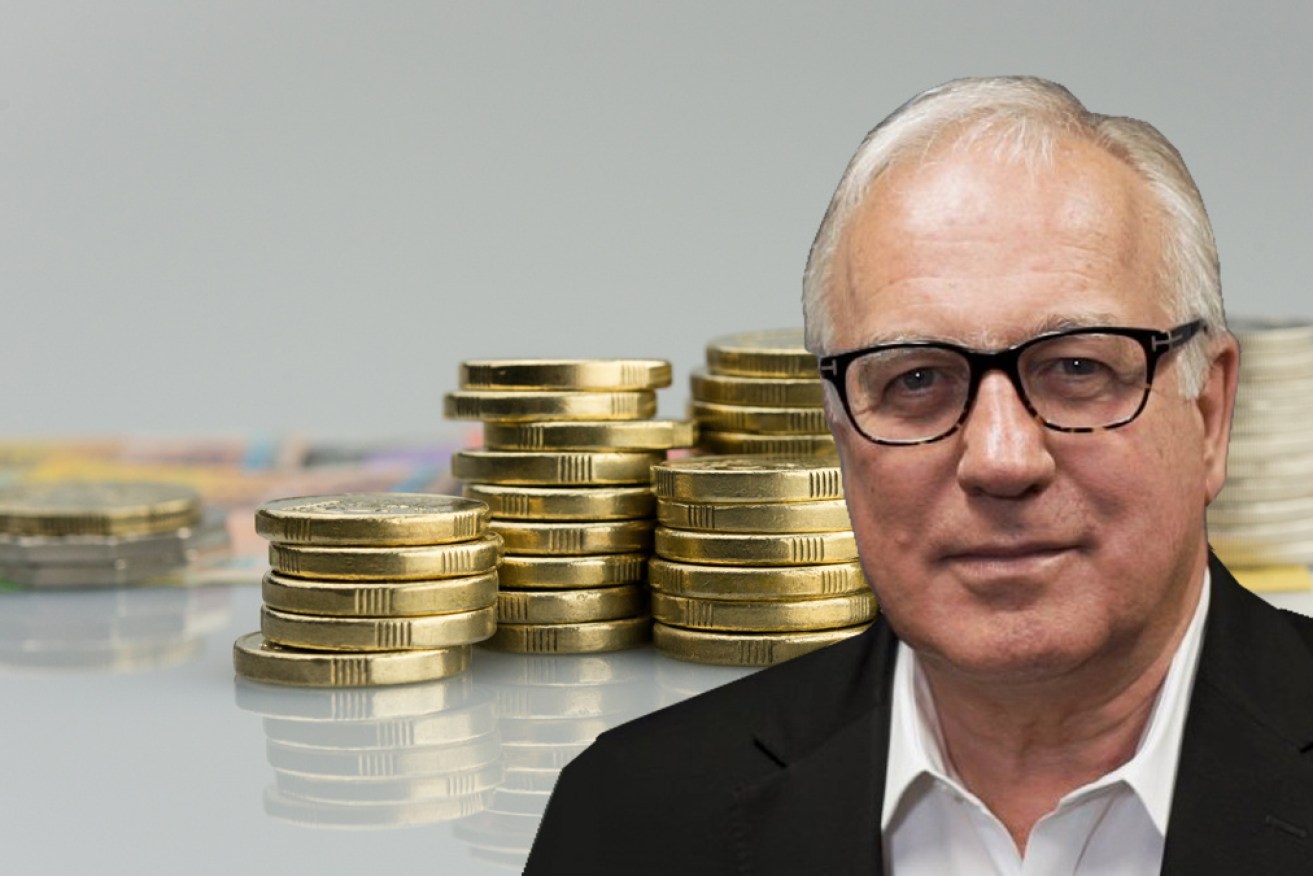How crazy rich banks and the GFC stopped the world 15 years ago


Saturday was the 15th anniversary of the collapse of Lehman Brothers, the defining event of the 2008 global financial crisis, and a very big day in the history of finance.
It wasn’t the beginning of the GFC, or the end of it, but it turned a category 3 cyclone into category 5, because, as I’ll explain, it made something called the Primary Fund “break the buck”.
The crisis had its origins in the US housing bubble of 2003-06 and the invention of CDOs – collateralised debt obligations, which were parcels of mortgages sold by Wall Street banks to pension funds.
Conflicted rating agencies allowed credit standards to slip, and as demand for these high-return securities grew loan quality fell and they began to include a lot of sub-prime mortgages – that is, borrowers who shouldn’t have got a loan in the first place.
As the US cash rate climbed from 1 per cent after the dot-com bust in 2000 to 5.25 per cent in 2006, house prices started to fall and unemployment rose. The sub-prime borrowers started to default and the CDOs developed cracks.
The start of the GFC itself can be traced to June 7, 2007, when Wall Street investment bank Bear Stearns halted redemptions on two of its CDO hedge funds because too many worried investors were pulling their money out. It really got under way on August 9 that year when French bank BNP Paribas announced “a complete evaporation of liquidity” had resulted in the suspension of two of its mortgage funds.
The rest of 2007 and the first nine months of 2008 were a slow-motion crash as US house prices fell 30 per cent, with foreclosures and regular bankruptcies and bailouts.
The Reserve Bank of Australia was inside its own bubble: it raised interest rates twice in 2008 when it was obvious a crisis was well under way. The last hike came in March 2008, a week after the insolvent Northern Rock Bank in the UK was nationalised. It was not the RBA’s finest moment, nor its last mistake.
The GFC unfolded like the quote from Ernest Hemingway’s The Sun Also Rises, when Bill asks Mike: “How did you go bankrupt?” Mike replies: “Two ways. Gradually and then suddenly.”
The “suddenly” was the collapse in 2008 of Lehman Brothers.
September 16 was a Monday, and my piece in Business Spectator that morning began like this:
“As I write, it’s about 5pm Sunday in Manhattan, and it’s been another long day at the New York Federal Reserve headquarters in Liberty Street, around the corner from Wall Street, as the regulators and Wall Street play chicken over Lehman Brothers.
“The next 24 hours will be one of the most decisive and significant in our lifetimes.’’
Toxic mortgages
“Bankers in black town cars began arriving at Liberty Street early in the day yesterday and at 7.30am three bags of Dunkin’ Donuts were delivered. On Saturday there had been 15 hours of donuts and coffee; yesterday was the same.
“On Saturday afternoon, Barclays Bank of the UK pulled out of a plan to buy the Lehman ‘good bank’ because it couldn’t get indemnities.
“But in any case, the matching plan for US banks to continue trading with the ‘bad bank’, which contain all of Lehman’s toxic mortgage exposures, was already in trouble.
“The question remains: Who will step up? Who will throw capital away buying an insolvent institution for zero dollars without taxpayers’ money making up the gap? Nobody will — or can.
“The three men trying to orchestrate the rescue of Lehman are Treasury secretary Hank Paulson, Fed chairman Ben Bernanke (who has stayed in Washington) and New York Fed boss Tim Geithner.
“They were trying to play Bank of America and Barclays off against each other but that strategy has now failed, and now they are just jawboning the others – telling them that if they do not put their capital on the line and continue to trade with Lehman this week, they would also suffer devastating counterparty runs this week and would lose more capital if they did not do it. In other words they all are playing chicken.
“If someone does not blink tonight New York time, which is our daytime, then it looks like Lehman will crash before dinner.”
No one blinked. Paulson, Bernanke and Geithner held the line, and Lehman Brothers crashed before dinner.
They decided to let Lehman go because they were concerned about moral hazard. It was a devastating mistake, because it resulted in one of the key money market funds, the Primary Fund, “breaking the buck”.
It was that event, not the Lehman collapse itself, that led to the bank run that then produced the full category 5 GFC and global recession.
US money market funds always maintain a constant net asset value of one dollar, which allows people to treat them as being as safe as banks, and use them as high interest rate cheque accounts.
Teetering … and crashing
In September 2008, there was more than $US3 trillion in money market funds in the US. The Primary Fund, which was part of the massive Reserve Group, contained $US65 billion in assets, including $US785 million in Lehman debt. On September 16, 2008, that asset became worthless, and the fund’s net asset value fell to US97c. It broke the buck.
It was only a fall of 3 per cent, or $US2 billion, but it was enough to prompt other customers to ask for their money back — in other words, to start a run.
The fund’s assets were frozen, the equivalent of a bank closing its doors to a howling mob in the street, and there was immediately a run on other funds: $US13 billion was withdrawn from money market funds on September 16; next day it was $US78 billion, and more again the day after.
Have things changed in the past 15 years, so the GFC can never happen again?
Well, yes and no. Things have certainly changed, starting with the tighter Basel III capital and liquidity rules in 2010. But Silicon Valley Bank went bust this year, and so did Credit Suisse.
Banking remains inherently ridiculous, with each $100 of loans tottering on $6 of capital (up from $4 before 2010).
Australia escaped the worst of the US bank runs in 2007-08 because of three things: A royal commission, an inquiry and a scandal.
The 1937 Royal Commission into Australia’s Monetary and Banking System was a delayed response to the banking crisis of 1893, when 54 of the country’s 64 banks collapsed because of the 1892 housing crash and depression. It established regulations and capital rules that set Australian banking on a solid path.
The Wallis Inquiry of 1996-97 was a response to the housing bust and banking crisis of 1989, and recommended taking bank supervision away from the Reserve Bank and putting it into a new regulator – the Australian Prudential Regulation Authority (APRA), set up in 1998.
And then, in 2003, APRA got its first crisis – the NAB foreign exchange scandal. The new gung-ho regulator cracked down hard on all the banks, demanding higher capital and better behaviour. Definitely no CDOs please.
So while Wall Street banks were going crazy from 2003, Australia’s banks were under the lash.
They waited until after the GFC to go crazy, and then got found out in the next banking royal commission in 2017.
Alan Kohler writes twice a week for The New Daily. He is finance presenter on ABC News and founder of Eureka Report








